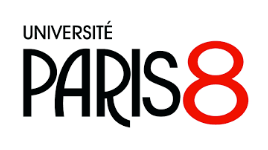16h30
Salle 159, UAR-CNRS 59 rue Pouchet, 75017 Paris
Lien Zoom :
https://univ-paris8.zoom.us/j/93220493998?pwd=SDhGMDk0TkZmVUx1K3hrRjlpbWZMZz09
The Lucinda Ferreira's legacy and the untold stories of the sign languages of Brazilian deaf micro communities.
Angelica Rodrigues, Dr., São Paulo State University-Unesp/FAPESP
Ivani Fusellier-Souza, Paris 8 University
The aim of this talk is to briefly present the goals, methodology and theoretical backgrounds of the research project called Lucinda Ferreira Project: profiles of deaf microcommunities in Brazil and sign languages typology (FAPESP PROCESS 2022/05962-4). Our research team is formed by hearing and deaf researchers from different universities of Brazil, United States and France and our main goal is to conduct a typological-comparative study between seven emerging sign languages used in the Brazilian localities of Boa Vista (in the state of Roraima), Buriti dos Lopes and Várzea Queimada (in the state of Piauí), Tiros (in the state of Minas Gerais), Umuarama (in the state of Paraná), Vila de Fortalezinha (in the Maiandeua island, in the state of Pará), Centro Novo do Maranhão and Centro do Guilherme (in the state of Maranhão).
The study of these languages will be conducted in order to detect how the size and concentricity of these deaf microcommunities and the age of these languages (number of generations of deaf people) affect the way these languages are established and linguistically structured. Considering the social vulnerability and the sociolinguistic implications involved in the processes of the emergence of familial or micro-communities sign languages in geographic or social isolation, these sign languages can be characterized as minority languages with a high risk of extinction. We divided these communities in two subgroups. The first group represents family or small villages deaf communities, where a particular sign language emerges due the high incidence of deaf people. In the second group, we found deaf communities that were exposed to two different sign language at the time, which includes the deaf community of Umuarama, where Brazilian Sign Language and American Sign Language were used in the deaf school in the 70’s, and the Venezuelan deaf community living in Boa Vista.
Our approach to the data, including the methodology and the analysis, are support by sociolinguistics (Labov, 1972) and sign language linguistics (Meir et al. (2010) Sandler et al. (2022) De Vos (2012), including the semiogenetic model (Cuxac and all 1996, 2000, 2001, 2003, 2004; Fusellier-Souza 2004, 2006).
La séance sera interprétée Anglais-LSF



